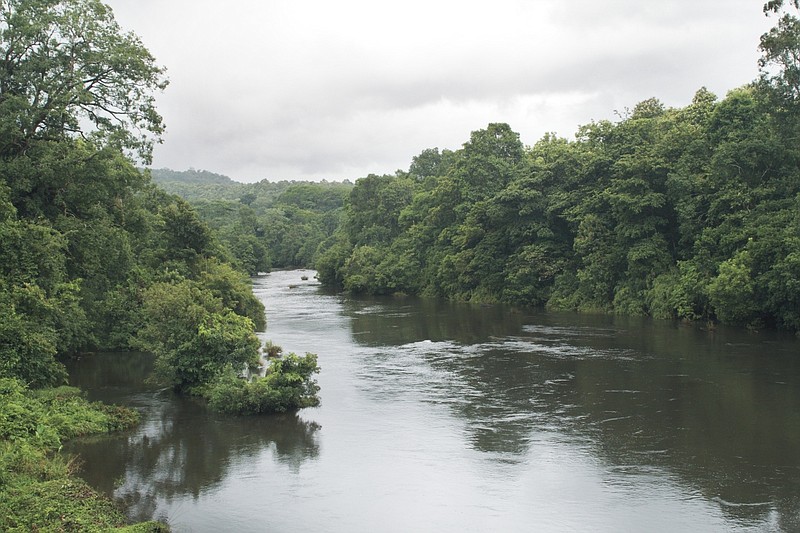The Army Corps of Engineers' feasibility study being conducted on Wright Patman Lake could cease at the end of August if more federal funding isn't given to the project.
"We've known about this for a long time. Ever since (the corps) went to a 3X3X3 SMART planning trying to complete the feasibility study in three years," John Jarvis, consultant for the Sulphur River Basin Authority, said during Tuesday's meeting. "We knew from day one that is would be impossible, but it was somewhat probable, so we continued on as far as we could."
The 3X3X3 SMART plan is a nationwide corps initiative to streamline how feasibility studies are conducted. The goal of the plan is to keep studies at three years, with a budget of $3 million and have three levels of vertical teaming, which is how corps employees work together to complete the study.
Since 2011, the corps and SRBA together have spent more than $4 million on the feasiblity study to determine whether and/or what amount of flood storage might be reallocated to supply water to meet the needs of Texas water planning Regions C and D. Region C consists of 16 counties in the Dallas-Fort Worth Metroplex, and Region D consists of 19 counties in Northeast Texas, including Bowie.
SRBA governs the 10 counties within the Sulphur River Basin, and has been the sponsor for the corps since 2005. The study is looking at what kind of pool raise Wright Patman can hold above the ultimate rule curve of 228.64 feet. The curve is how the corps operates Wright Patman under the existing contract, which was executed in 1968.
The 3x3x3 change in the corps' approach to the study didn't work for the amount of work needed to complete the study, Jarvis said.
Elston Eckhardt, chief of the Civil Management Branch of the corps' Fort Worth District, is working with Jarvis to put together an Exemption Package to present in Washington, D.C., later this month asking for funds to complete the study.
"We still have a little bit of funding left but not a whole lot," Eckhardt said. "Do we have enough to make it to the (Tentatively Selected Plan) or not? It's going to be close. That was our idea that we'd have enough, but without any further infusion for fiscal year '17 we would not have any more federal money."
The TSP is the corps' recommended height of the water level at Wright Patman for reallocation, if it is approved. Public hearings were held in February for the community to see proposed lake levels, and the next step after the plan's presentation would be a draft report released to the public in February 2017, with an agency decision meeting and final report coming in the spring of 2018.
Those would only come if the Exemption Package is approved. Eckhardt said he thinks there is a good chance it will be, as it would be a "win-win deal" for both the corps and SRBA.
"There's a lot here for the corps and the government it's a benefit to them to because let's say the reallocation goes through all the way," he said. "If it does go through, then that means that a greater percentage of our operating costs are going to be paid by local entities that would be less drain on the Federal Treasury and it puts more to local because there'll be a bigger percentage of that pool used for water supply."
Those entities include regional stakeholders including the City of Texarkana and Riverbend Water Resources District, who currently have water rights in Wright Patman.
If reallocation is approved for the lake, those stakeholders would also include members of the Joint Commission for Program Development, made up of the city of Dallas, the city of Irving, North Texas Municipal Water District, Tarrant Regional Water District and the Upper Trinity Water District. Right now, JCPD funds SRBA in its search for water for its ever-growing population.
The delay in putting the package together to present to Major General Donald Jackson, the corps' deputy commanding general for civil and emergency operations was partially due to additional dam studies that had to be done in correlation with the reallocation study.
"There were a lot of delays that occurred in that didn't allow us to get to that three-year point," Jarvis said.
In the past three years, Eckhardt estimates a total of $2.7 million has been spent on the study, with SRBA's in-kind contribution estimated at around $1.5 million.
In other business, Corps Wildlife Biologist Melinda Fisher gave a presentation on mitigation, outlining exactly what it means and what's involved. Mitigation is an important part of water planning, as it is how the corps gives back land taken by raising water levels.
Three sedimentation projects were also approved: the Sedimentation Immediate Impact Project to quantify the impact of the immediate impact of drop pipes along North Sulphur; an educational and public outreach project in Texarkana to acquire water quality data; and an additional educational and public outreach program in Paris, in relationship with Paris Junior College. Mike Buttram, Texarkana College professor who coordinates the Clean Rivers Program for SRBA, will facilitate the plans.
The next meeting is scheduled August 16.

